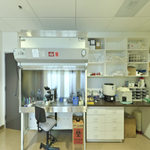About
Success
Treatment
Financial
Resources
Blog
Contact
Site Tools

Diagnostic Procedures
Offering advanced fertility treatment options worldwide
Testing for Fallopian Tube and Uterine Abnormalities
Pelvic Ultrasound
This refers to a non-invasive method that is used to examine the ovaries and womb by using high sound waves to show the inside of the body. Since the body is made up of over 90 percent water, it is possible to use sound to ‘see’ what is inside the body the same way sonar is used to find and identify objects in water. An echo is produced every time the sound waves hit a tissue interface e.g., a blood vessel. Using these echoes, some advanced, high-speed computers can create an image of your internal organs. Ultrasound can help the physician to check the endometrium and to know the exact number of mature eggs present, although the procedure comes with little discomfort or risks. Also, ultrasound can be used to diagnose fibroid tumors and ovarian cysts.
Post-Coital Test (PCT)
The post-coital test (also known as a Huhner) is an excellent means of assessing the interaction of the sperm and the cervical mucus. In order to reach the fallopian tube and fertilize an egg therein, the sperm must first migrate through the cervical mucus. There are many factors which can impair the ability of the sperm to survive and traverse the cervical mucus, including infection, prior surgery on the cervix, and production of antibodies (substances that can kill or immobilize the sperm).
During a normal menstrual cycle, there are only a couple of days during which the sperm can survive in the cervical mucus. At other times of the cycle the mucus is a very effective barrier. Around the time of ovulation, the cervical mucus becomes very thin and watery and probably even somehow assists the sperm as they migrate through to the uterus and on to the fallopian tube. The quality of the cervical mucus as well as the number of sperm present and their motility will be assessed. The timing of this test is, therefore, crucial and must be done within 12 hours after Intercourse. The post-coital test is an important part of the evaluation of difficulty conceiving. If it is not normal, other evaluation or therapy may be suggested.
The turnaround time for this test is within a day.
Sperm antibody testing (indirect IBT)
Is used to rule out the presence of sperm antibodies in female partner’s serum. May be drawn at anytime during the woman’s cycle. back to top
The turnaround time for this test is within a day.
Endometrial Biopsy
A procedure by which a sample is taken of the endometrial lining of the uterus, shows evidence of ovulation and degree of maturation of the uterine lining, and can reveal uterine cancer, uterine fibroids, uterine polyps, and adenomyosis. This test also reveals if the woman has a luteal phase defect – a hormonal imbalance which prevents a woman from sustaining a pregnancy because not enough progesterone is produced. The test is typically performed 1-3 days before onset of woman’s menstrual flow.
Hysteroscopy
This is a procedure that involves insertion of a narrow telescope-like instrument through the vagina and cervix into the cavity of the uterus (endometrial cavity). The uterine cavity is then distended with fluid and visualized. This procedure allows us to determine whether there are any defects such as Fibroid tumors, polyps, scar tissue, a uterine septum, or other uterine problems inside the cavity.
Laparoscopy
Around 40 percent of women whose previous fertility workup fails to reveal the cause of their infertility will show abnormal uterine or tubal findings when a laparoscopic examination is carried out. Two small incisions (one above the pubic bone and the other at the belly button) are usually made during a laparoscopy procedure. The patient’s abdomen is then injected with carbon dioxide gas, which distends the abdomen and pushes the bowel away. A small hollow tube with a tiny camera and lenses known as laparoscope is inserted into the body via the umbilical incision. Next, a probe is inserted through the other incision. This allows the physician to see the external surface of the ovaries, fallopian tubes, and ovaries. Laparoscopy can be used to identify pelvic scar tissue, endometriosis, and blockage of the Fallopian tube. Thankfully, most of these dreaded conditions can be rectified during this procedure either by destroying endometrial implants or by removing scar tissues that may be joining organs together.
Microlaparoscopy
A new minimally invasive diagnostic surgical procedure uses telescopes and instruments that are much smaller than normal. If this procedure is appropriate for your condition, smaller incisions will be made and postoperative abdominal tenderness may be reduced.
At-Home Semen Analysis
Complete a semen analysis test from the privacy of your home
Coastal Fertility has partnered up with Posterity Health to offer you at-home semen analysis tests. This easy and convenient process allows men to learn about their sperm quality and fertility health and create treatment plans to overcome infertility factors.
-
Semen analysis kit mailed to your home and then FedExed back to the laboratory. Free shipping both ways. -
Follow included instructions and complete sample collection in the privacy of your own home. -
Comprehensive semen analysis performed at the lab. -
Schedule a telehealth appointment with top male fertility experts and discuss the results and next steps. Can be scheduled within one week.
Schedule a Consultation
We offer one of the most advanced fertility treatment options. Book your appointment today to learn more.
Click here to see our program guidelines.
Halloween 2019
Each year, Coastal Fertility Medical Center’s staff hosts a fun get together for our former patients and their families. View more photos from our 28th annual Miracle Babies Halloween event!Popular Searches
- Orange County Fertility Clinic
- Irvine, California Fertility Center
- Coastal Fertility Medical Center
- Free Fertility Seminar, Irvine CA
- In Vitro Fertilization and ICSI
- Best Orange County Infertility Doctor
- Southern California Fertility Specialist
- PGD, PGS Orange County
- Egg Donation and Surrogacy
Address
Coastal Fertility Medical Center15500 Sand Canyon Avenue
Suite 100
Irvine, CA 92618
©2024 | Sitemap | HIPAA/Privacy | Disclaimer and Privacy Policy
News from our Top Doctors

Our fertility clinic focuses on helping you build your family regardless of your sexual orientation or the gender you choose to identify with. We are even taking further steps to make LGTB people feel more welcome at our fertility clinic. Each of our patient-facing staff goes through LGTB training to let family-building clinicians provide necessary support and make you feel highly welcome.

Coastal Fertility Medical Center offers one of the most advanced fertility treatments and is completely transparent regarding the costs of procedures and any other expenses that you may have to pay before commencing your treatment. This differentiates us from some fertility clinics that reduce prices before the signing of the contract but charge you extra later on. We make sure our patients are well aware of any possible extra pricing that may occur over the course of their treatment.

The infertility industry is currently segmented, with each service or treatment being handled by a different provider. Our all-inclusive model simplifies an otherwise complex and difficult process. We are here to revolutionize the infertility industry by offering a one-stop-service model to assist our patients through infertility challenges while reducing physical, emotional, and financial risks.

Our globally respected team of specialists are helping improve IVF technologies to enter into a generation of better outcomes for infertility. Although you’ll have a doctor guiding you, you are also going to benefit from the experience and insights of other doctors during case review collaboration meetings, which take place every week. So, you won’t just rely on the expertise of a specialist but benefit from the knowledge of many reputed fertility experts.

Our team specializes in difficult cases and help patients who may have been considered “hopeless” at other fertility clinics. Thanks to our personalized solutions, expertise, and internal collaboration, weare able to maximize pregnancy success rates that are well above the industry average, even in difficult infertility cases.

We know that every situation is different and that everyone requires different treatments. Unlike facilities that take “a one-size-fits-all” approach for all cases, our fertility specialists use more than 40 customized protocols to raise the chances of success. The customized approach even extends to our fertility laboratory. Our on-site lab director and his highly-experienced team nurture every embryo and egg to increase the odds of success of each cycle.

Coastal Fertility Medical Center offers one of the most advanced fertility treatments and is completely transparent regarding the costs of procedures and any other expenses that you may have to pay before commencing your treatment. This differentiates us from some fertility clinics that reduce prices before the signing of the contract but charge you extra later on. We make sure our patients are well aware of any possible extra pricing that may occur over the course of their treatment.
Fertility Preservation
Focus on your priorities and take control of the timeline of your family planning today.
Thanks for Joining!
We will be sending new updates soon.
You’re all set!
Your new patient forms have been submitted and received. We look forward to seeing you at your appointment.
Send us a message, we’ll be happy to answer any questions!
Please complete the form so we can best serve and help you with your journey towards parenthood.
On Demand Seminar Registration
Following the Preimplantation Genetic Screening process, which helps ensure there are normal chromosome numbers and detects possible genetic disorders, the most healthy embryo(s) are selected to be implanted into your or your chosen surrogate’s womb. 2 weeks after the transfer of the embryo, your physician will conduct a final blood test to determine the level of hCG (human chorionic gonadotropin) in your body. Increased hCG levels usually indicate a positive pregnancy test.

For fertilization to take place, the collected egg and sperm are combined in a petri dish and cultured in an embryo incubator. This dish is closely watched to check whether any of the eggs have been fertilized. Once the egg is fertilized, it is referred to as an embryo or a blastocyst on the 5th day of development. Our in-house embryologist carefully nurtures every embryo to the right time, even if it means working outside the standard business operating hours. For instance: If an oocyte is not mature, our laboratory will wait for it to mature and then ICSI it at the right time.

The egg retrieval is a slightly invasive medical procedure that takes about 20 to 30 minutes. You will be given an anesthetic to make you sleep for the duration of the procedure. Using ultrasound technology, your doctor will harvest your eggs transvaginally with a small, hollow needle connected to an ultrasound probe. Once your eggs are collected, your partner’s semen or donor sperm you have pre-selected is used for fertilization. The sperm are washed and prepared, and the top-quality sperm extracted is used to fertilize the eggs.

Your doctor will create a customized medication schedule that contains information about the fertility medications and hormone injections you have to take. Medication and injections are taken to encourage your ovaries to mature a large number of eggs for fertilization. Since women don’t respond to fertility drugs and hormones the same way, personalized protocols are crucial to the IVF cycle success. At Coastal Fertility, we will monitor you closely, letting you understand the changes occurring in your body and keeping track of how your egg follicles are growing.

On-site consultations typicallyinclude a standard fertility evaluation, consisting of a physical examination, complementary follicular ultrasound, and testing to enable your doctor to know your present fertility status and draw up a treatment plan.

This consultation includes a detailed medical evaluation with a doctor. You and your physician will review your health records and have enough time to talk about your goals and get answers to your questions. We recommend that you jot down all your questions before the visit to allow you to make the best use of the time spent with your doctor.

Your Reproductive Endocrinologist will take all factors into consideration and create a comprehensive plan of care, otherwise known as the treatment plan. This plan will include treatment recommendations from the physician and enable your financial coordinator to make a precise quotation once you meet.

Our globally respected team of specialists are helping improve IVF technologies to enter into a generation of better outcomes for infertility. Although you’ll have a doctor guiding you, you are also going to benefit from the experience and insights of other doctors during case review collaboration meetings, which take place every week. So, you won’t just rely on the expertise of a specialist but benefit from the knowledge of many reputed fertility experts.

The infertility industry is currently segmented, with each service or treatment being handled by a different provider. Our all-inclusive model simplifies an otherwise complex and difficult process. We are here to revolutionize the infertility industry by offering a one-stop-service model to assist our patients through infertility challenges while reducing physical, emotional, and financial risks.

Our fertility clinic focuses on helping you build your family regardless of your sexual orientation or the gender you choose to identify with. We are even taking further steps to make LGTB people feel more welcome at our fertility clinic. Each of our patient-facing staff goes through LGTB training to let family-building clinicians provide necessary support and make you feel highly welcome.

We know that every situation is different and that everyone requires different treatments. Unlike facilities that take “a one-size-fits-all” approach for all cases, our fertility specialists use more than 40 customized protocols to raise the chances of success. The customized approach even extends to our fertility laboratory. Our on-site lab director and his highly-experienced team nurture every embryo and egg to increase the odds of success of each cycle.

Our team specializes in difficult cases and help patients who may have been considered “hopeless” at other fertility clinics. Thanks to our personalized solutions, expertise, and internal collaboration, weare able to maximize pregnancy success rates that are well above the industry average, even in difficult infertility cases.

Upon your arrival, you will check in with a Patient Care Coordinator. We will obtain your insurance information for benefits verification, a copy of your identification and take a picture for your electronic medical chart




































